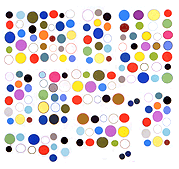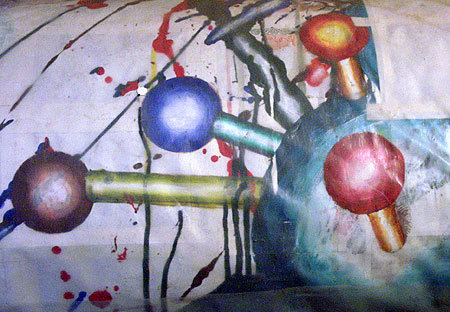An earlier post talked about the Web as "consumer's medium."
Characterizing it that way is sacrilege to the tech community gospel that TV and radio are "one way, passive" media while the Net is active and productive. But even old Rhizome.org hand Alexander Galloway talks in his book Protocol about how seductive roaming among hyperlinks is. (From his tone he seems more disposed to transgressive disruption of same in the manner of old school net artists jodi.org.)
Other artists encountering this flowing, sensational, “fascinating” (in the Baudrillardian sense) environment view it as a *success* of the post-dot com era, creating an inexhaustible pool of potential subject matter.
The best differentiation I've seen of late 90s Net Art and the present bunch: the former was interested in the mechanics of the network and made art about that. "What is a hyperlink and can we mess with that?" "What are the social implications of networks?" etc. The latter crew views the Net as a "medium that works across media" (Damon Zucconi's phrase) so that artists are dealing with the Net and its status as a medium but also all the content it touches (video, music, digital painting, photography, and emerging hybrid forms). The goals are larger and more ambitious but also more difficult.
The old Modernist ideal of working through past art to arrive at your own becomes especially troublesome within this suddenly exponentially expanded field.
The blog VVork exemplifies a new type of art "statement" based on endless, voracious consumption that has the (perhaps unintended) consequence of making the quest for originality seem silly. The curators scour the net for examples of conceptual-style art that is readily documentable in the form of photos and short video clips. Most of the accompanying one or two sentence explanations are lifted off the artists’ sites. They are posting several hundred artworks a year in this fashion. They consume and we watch over their shoulders. They don’t alter anything, they don’t editorialize, and their comment feature is rarely used. As “fellow consumers” we have to decide if the consumables have value.
The bloggers and surf clubs discussed at the Net Aesthetics 2.0 panel follow a similar model. But instead of stoically re-creating the art world online, they are opening themselves to a galaxy of experience that could potentially be considered art, while at the same time subversively slipping in their own content.

